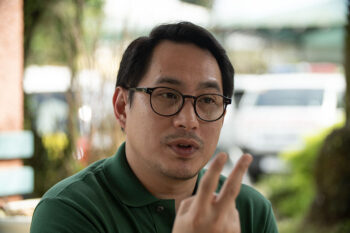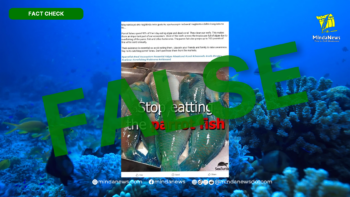GENERAL SANTOS CITY (MindaNews / 21 Aug) – We [F/P]ilipinos are [f/p]unny [f/p]eople. That was what my father/pader said. We have a [F/P]ilipino culture of inconsistency although creating clear confusion. That is what the report, “Palace: It’s Pangulo ng Pilipinas – not Filipinas” (Philippine Daily Inquirer, August 19, 2013) infers.
The use of “Filipino” in one instance and “Pilipino” in another is inconsistency but the confusion is clear. So, why make an issue of it? For entertainment, the word is a good topic for an interminable debate; in idleness, we love to debate without resolution.
The question is a non-issue – a matter of linguistic peculiarity. There is no “f” consonant sound in our native tongue or languages – only “p”. Our tongue and lips are naturally and instinctively configured for the “p” sound.
So, as a rule, if we are true to our native tongue or language, it’s “Pilipino”, not “Filipino”; “Pilipinas”, not “Filipinas”; hence, “Pangulo ng Pilipinas”, not “Pangulo ng Filipinas”. That should settle the question.
For some examples, the official seal of the Republic of the Philippines is “Republika ng Pilipinas”; that of the President, “Sagisag ng Pangulo ng Pilipinas”. Our national anthem is “Pambansang Awit ng Pilipinas”. Our navy boats have “BRP”, for “Barko ng Republika ng Pilipinas”, to distinguish their names. It’s “Republika ng Pilipinas” in official letterheads, with or without seals, of all government offices – local governments, the courts, the Congress, the Supreme Court, etc. – except the Komisyon ng Wikang Filipino.
Just one more example: Any English-speaking Ilonggo talking to a priest of his or her holiday break would say: “Father, we have no office today. It’s official holiday. Andres Bonifacio Day.” But speaking unconsciously in Ilonggo he or she will say: “Pader, wala kami opisina karon. Pista opisyal. Adlaw ni Andres Bonipasyo.” Any Mindanawon, Tagalog, Sugbu-anon, Boholano, etc. will spontaneously pronounce “p” for “f” when talking in his or her native tongue.
But to clarify the confusion, as exception, we have special usage – “Filipino” to identify our citizenship and nationality. Abroad and in our passports, we are “Filipino”; in the United States, Filipinos with dual citizenship are “Filipino-Americans” – for short, “Fil-Ams” ; but, unconsciously, in Philippine dialects, it’s “Pil-Ams”. In the 1987 Constitution, “Filipino” is our national language. Is the confusion clear?
How the confusion occurred and to understand it more there are a number of things we have to look into in relation to our desire to develop a national language. We will return to this later.
The Inquirer report referred to at the outset is a follow-up of its August 18 report, “Language office head told: Mind you Fs, Ps, manners”. The two reports said that the KWL (Komisyon ng Wikang Filipino) or the CFL (Commission on Filipino Language) got the ire of Malacañang when it changed “Pilipinas” to “Filipinas” in the April 2, 2013 message of the President published in the KWL souvenir program commemorating the 225th birthday anniversary of the poet Francisco Balagtas. “Pilipinas” in Proclamation No. 964, s1997 had also been changed.
KWL Chair Virgilio Almario said the name of our country should be “Filipinas”. He argued that if the name of our language is “Filipino” then the name of our country must be “Filipinas”. His commission has passed two resolutions to start a move to effect the change. In eagerly trying to right a perceived wrong, KWL does not see it’s own wrong. We will discuss this later.







